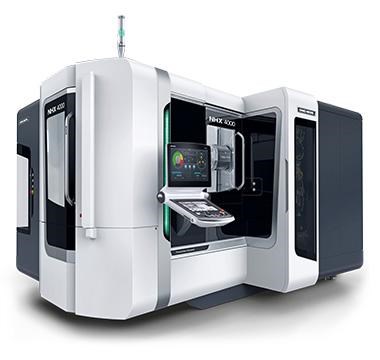- DMG’s effect was fast acting and could bring about a change in attitude in only a short period of time. The three cases above demonstrate the dramatic effect DMG can have on cognitive and brain function in individuals whose neurological pathways were lacking the important metabolic contribution that DMG can make.
- The tangled web of Conduct, Performance Management and Disability What happens when you are about to take disciplinary action for your employee with performance or conduct violations, and at the onset of that discussion, the employee tells you that they feel the.
Earlier this year, Joe Biden reached out to Anita Hill, the young law professor who famously testified that then-Supreme Court nominee Clarence Thomas had sexually harassed her. Biden presided over Thomas’s confirmation hearings, during which Hill was mocked, degraded, and humiliated. During the phone call, Biden expressed “regret for what she endured” and “admiration forRead More.
By Ashely Watson


N,N-Dimethylglycine (DMG) is the flagship product at FoodScience® of Vermont, and our DMG supplements continue to be part of our growing success in the health supplement industry. The DMG family of products include formulas that provide comprehensive support for many bodily functions, including normal detoxification, circulation, oxygen utilization, hydration, and much more.* This summer, we’ve been featuring our DMG products that contain this versatile nutrient used to support overall wellness.
For this week’s blog post, we discuss the history behind DMG’s role in the birth of FoodScience® Corporation, which started as a small family-owned company that has now grown to over 200 employees and produces advanced supplement formulas for both humans and pets. We will also discuss the benefits of DMG, the research behind it, and how it functions in the body.
What is DMG?
Roger V. Kendall, Ph.D. has worked in nutritional research and product development for over 25 years, and he joined FoodScience® in 1978 to help the company become a leader in DMG research. Dr. Kendall defines DMG in the following excerpt from his website:
N,N-Dimethylglycine or DMG is a natural substance found in low levels in the body and in certain foods like meat (liver), beans, seeds, and grains. DMG is not found in high levels in your body because it is an intermediary metabolite, meaning it has a temporary role in the cell cycle before it is rapidly broken down into other substances that your body needs.
Dmg Blog Download
He also explains that the human body only produces small amounts of DMG, so taking DMG supplements may provide various health benefits. DMG is a form of the amino acid, glycine, and research shows that’s an important part of cell metabolism. But it wasn’t always known as DMG.
Vitamin B-15 and DMG
In his book, Building Wellness with DMG, Dr. Kendall writes about how DMG was discovered. It was originally called “Vitamin B-15” when Japanese researchers isolated one of the active factors in the liver. At the same time, researchers in the U.S. discovered pangamic acid in certain seeds. Only later were the two substances linked, and then the Russians picked up the U.S. research on pangamic acid. Russian research used the salt of the acid—calcium pangamate.
In the late 1950s, calcium pangamate products began appearing on the shelves in Europe, and they were labeled as Vitamin B-15, which companies claimed to provide many health benefits. Throughout the 60’s, it was used mostly to provide support for athletic performance, and in 1970, FoodScience® founders, Dom and Guido Orlandi started a supplement company so that they could distribute a similar product to health food stores and doctors. Dom was aware the Russian research was more complete than the research done in the U.S., so he created a research team to isolate the active substances in the Russian version of calcium pangamate and B-15. One of the main ingredients was dimethylglycine (DMG).
From the earlier research done by the Russians, it was evident that they didn’t consider DMG the active ingredient of calcium pangamate, even though it was clear that it was part of the active ingredient. That’s when the Orlandis discovered that a mixture of calcium gluconate and dimethylglycine provided the same effect of the vitamin B-15 product in Europe. Then in 1971, they launched a product called, Aangamik-15®, named after a Russianized version of Pangamic/B-15.
When Dr. Kendall joined the research team at FoodScience® in 1978 as the Director of Research and Development, he was assigned the task of researching all the benefits of this new signature product to ensure the quality of Aangamik-15® through each production phase. He identified DMG as the active metabolite in the popular “Vitamin B-15” product, but none of the B-15 products contained enough DMG to provide any effects.
Dmg Blog Login
Finally, in 1981, the FDA recognized DMG as a food when produced alone as a pure nutrient. This gave Dr. Kendall the green light to produce a pure DMG product, called Aangamik-DMG®. Another FDA ruling in 2000 broadened the forms of DMG products, which paved the way for more comprehensive formulas combining DMG with other synergistic nutrients to provide a wide array of health benefits.
Today, we sell a variety of DMG formulas, which are available in powder, liquid, and chewable tablets. You can find descriptions of our entire DMG family of products on our website. Don’t forget that DMG is safe for pets, and you can find both cat and dog supplements from our Pet Naturals® of Vermont division.
Dmg Mori Blog
Do you take a DMG product from FoodScience®, or give one to your pet from Pet Naturals®? Share your thoughts with us on Facebook!